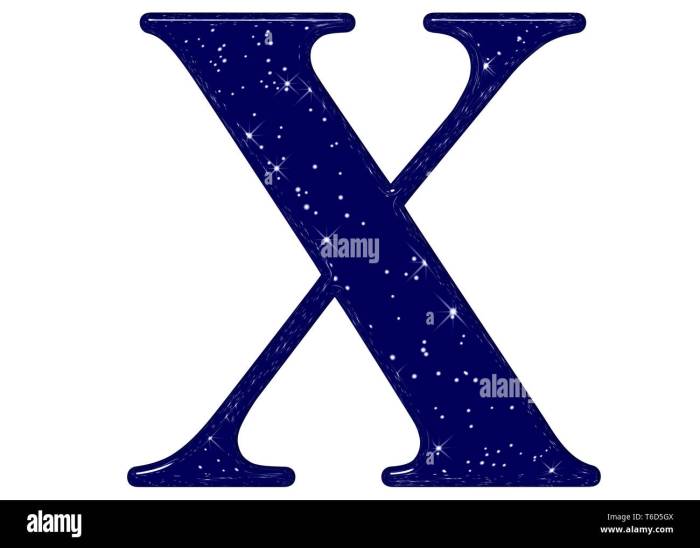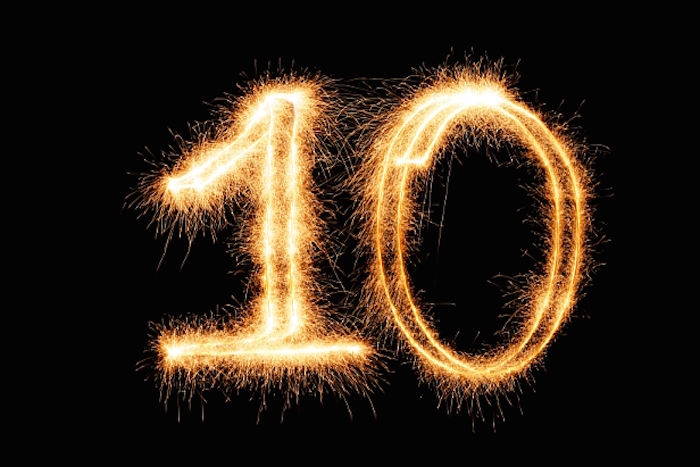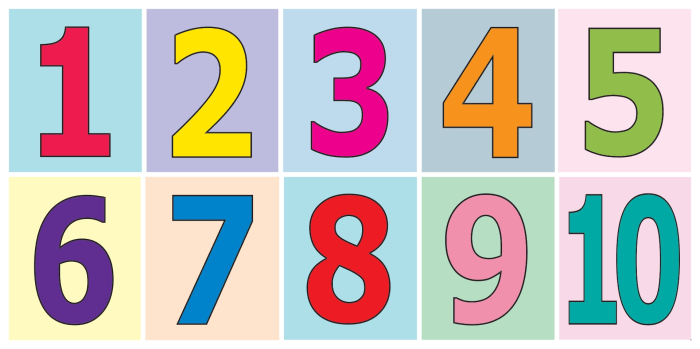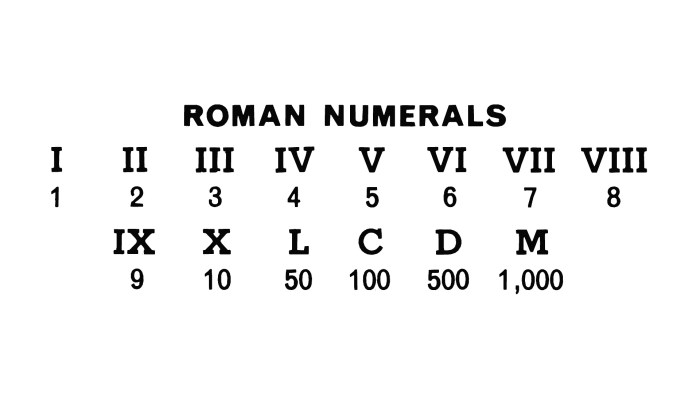6 awesome reasons create visual content for your website blog. Visual content isn’t just pretty; it’s a powerful tool to boost your website and blog. From captivating images to engaging videos and informative infographics, visuals can transform your online presence. This post dives into six key reasons why incorporating visual content is crucial for attracting, engaging, and retaining your audience.
Imagine a website filled with nothing but text. It might be informative, but likely, it’s boring. Visual content breathes life into your online space, making it more appealing and interactive. This comprehensive guide explores how different visual elements can enhance your blog posts, boost your brand, and ultimately drive conversions.
Introduction to Visual Content
Visual content plays a crucial role in enhancing online presence and engagement. In today’s digital landscape, captivating and informative visuals are essential for grabbing attention, conveying complex information concisely, and ultimately, driving user engagement. Effective use of visual content can significantly boost user experience, making websites more appealing and memorable.Visual content, ranging from images and videos to infographics and interactive elements, effectively communicates ideas and fosters a deeper connection with the audience.
This diverse format allows for a more dynamic and engaging user experience compared to solely relying on text-based content.
Defining Visual Content
Visual content encompasses all forms of non-textual information presented online. This includes images, videos, infographics, animations, and interactive elements. Its importance lies in its ability to convey information quickly, evoke emotions, and hold the viewer’s attention. Visuals are particularly effective in breaking up large blocks of text, making websites more visually appealing and user-friendly.
Forms of Visual Content
Visual content takes many forms, each serving a unique purpose and offering different advantages.
- Images: Images can range from simple stock photos to high-quality illustrations. They can be used to highlight products, showcase services, or convey specific messages. For example, a product image on an e-commerce website allows users to quickly understand the product’s features and aesthetics, driving purchase decisions.
- Videos: Videos are a powerful tool for conveying complex information, showcasing processes, or providing demonstrations. They can be used to introduce a product, explain a concept, or create engaging tutorials. For example, YouTube channels rely heavily on videos to educate and entertain their audience.
- Infographics: Infographics present data and information in a visually appealing and easily digestible format. They are particularly useful for summarizing complex data or presenting statistics. For instance, a business might use an infographic to highlight key financial performance indicators to its stakeholders.
- Animations: Animations can be used to create interactive experiences or to present information in a dynamic way. For example, a website for a software company could use animations to demonstrate how their product works.
- Interactive elements: Interactive elements, such as interactive maps or quizzes, can engage users and encourage participation. These elements can be used to guide users through processes, allow them to explore information, or collect user feedback.
Examples of Effective Visual Content Usage
Many websites effectively utilize visual content to enhance user experience and achieve their marketing goals. For instance, Netflix utilizes compelling trailers and movie posters to entice viewers, while websites like Canva and Adobe showcase their products with high-quality images and videos. These examples demonstrate how visual content can be integrated seamlessly into a website’s design to improve user engagement and achieve business objectives.
Visual Content Benefits
The table below Artikels different types of visual content and their corresponding benefits:
| Visual Content Type | Description | Benefits | Examples |
|---|---|---|---|
| Images | Static visual representations | Capture attention, enhance understanding, improve aesthetics | Product photos, stock photos, illustrations |
| Videos | Dynamic visual representations | Convey complex information, demonstrate processes, create engagement | Product demos, tutorials, explainer videos |
| Infographics | Visual representation of data | Summarize complex data, present statistics clearly, improve understanding | Charts, graphs, diagrams |
| Animations | Animated visual representations | Create interactive experiences, present information dynamically, improve engagement | Explainer animations, interactive tutorials |
Improving Website Engagement with Visuals: 6 Awesome Reasons Create Visual Content For Your Website Blog
Visual content is no longer a nice-to-have, but a necessity for any website aiming for high engagement and user retention. High-quality visuals can significantly impact user experience, encouraging deeper exploration and a longer stay on your site. Effective use of visuals can translate to a higher conversion rate and a more memorable brand experience.Attracting and keeping visitors on a website is a key goal for businesses.
Visuals play a pivotal role in achieving this. A well-designed and engaging visual strategy can transform a passive visitor into an active participant, fostering a more positive interaction with the website.
Visuals for Enhanced User Attraction
Visual elements are the first point of contact for users. Eye-catching images, compelling videos, and interactive graphics immediately grab attention, drawing visitors in and encouraging them to explore further. A visually appealing website design fosters a positive first impression and sets the stage for a more engaging user experience.
Role of Visuals in Visitor Retention
Beyond initial attraction, visuals are critical for maintaining user interest and encouraging return visits. High-quality images and videos, strategically placed within the content, can break up large blocks of text, making the site more digestible and visually appealing. This increased readability, in turn, improves user comprehension and reduces bounce rates.
Design Elements for Appealing Visuals
The design elements that make visuals appealing and engaging are numerous. A strong color palette, appropriate font choices, and clear visual hierarchy are key. Consistent branding and a visually cohesive design create a unified and memorable experience for the user. Visuals should be relevant to the content and contribute to a seamless flow of information. High-quality images and videos, free of distortions or blur, also enhance the visual appeal.
Consider using a consistent style guide for visuals to maintain brand identity across the entire website.
Visuals Enhancing Website Navigation and Readability
Visuals can be integrated effectively into website navigation. Using icons, infographics, and well-placed images can guide users through the website’s structure, making navigation intuitive and less daunting. Well-structured visuals can also improve the readability of lengthy articles or complex information. Infographics, for example, can present complex data in a more digestible and engaging format.
Comparison of Visual Content Types
| Visual Content Type | Description | Potential Impact on User Engagement (Time Spent on Site) | Potential Impact on User Engagement (Bounce Rate) |
|---|---|---|---|
| High-quality Images | Professional-looking, relevant images. | Increased time spent on pages with images. | Lower bounce rate, higher dwell time. |
| Engaging Videos | Short, informative, and visually compelling videos. | Significant increase in time spent on the page. | Lower bounce rate due to higher engagement. |
| Interactive Graphics | Infographics, charts, and interactive elements. | Increased time spent exploring the information. | Lower bounce rate, higher interaction with data. |
| Infographics | Visual representation of data or information. | Significantly increased time spent on the page. | Lower bounce rate due to effective data presentation. |
Boosting Brand Recognition Through Visuals
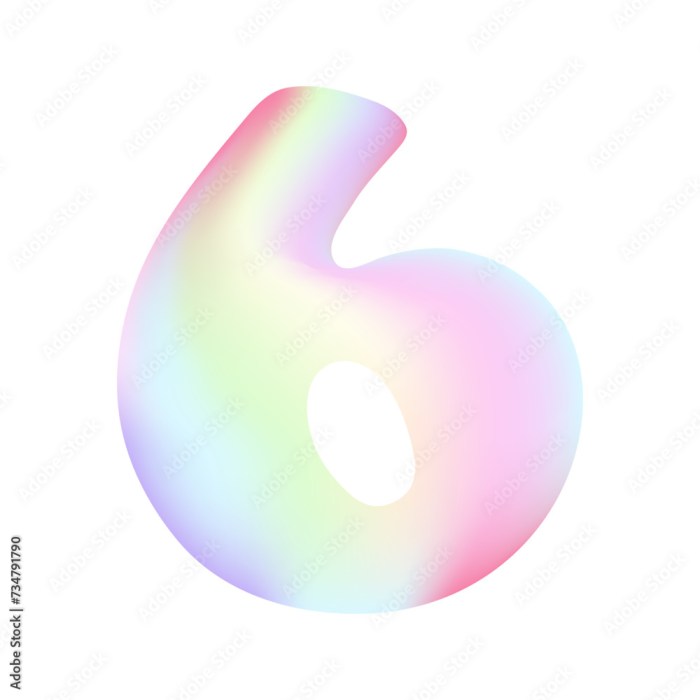
Visual consistency is paramount in building brand recognition and trust. A cohesive visual identity, encompassing logos, color palettes, typography, and imagery, creates a strong, memorable impression on potential customers. This consistent visual language fosters familiarity and reinforces brand messaging, ultimately strengthening the connection between the brand and its audience. A well-defined visual identity acts as a silent ambassador, conveying brand values and personality without the need for extensive verbal explanations.Visuals are a powerful communication tool.
A brand’s visual identity speaks volumes about its values, personality, and target audience. Consistent application of these visual elements across all platforms creates a unified brand experience, strengthening brand recognition and driving customer loyalty. Different visual styles evoke distinct emotional responses and perceptions, impacting how consumers perceive a brand. Understanding the nuances of visual communication is critical to establishing a strong brand presence.
Visual Consistency and Brand Recognition
Visual consistency across all marketing materials and platforms is essential for building a strong brand identity. This involves using a unified logo, color palette, typography, and imagery style. Repeating these elements reinforces brand recognition and builds trust among consumers. Familiarity with a consistent visual identity creates a sense of reliability and professionalism, key factors in establishing customer loyalty.
Creating visual content for your website blog is a fantastic idea for several reasons. It’s engaging, memorable, and helps boost your SEO. But, did you know that incorporating the right fats into your diet can also enhance your well-being? For example, consider adding some healthy fats like those found in four great fat rich foods start adding your diet to your daily routine.
Visuals keep your audience hooked and encourage more interaction, ultimately leading to more traffic and success for your blog.
A brand with a clear visual identity is more likely to be remembered and associated with positive attributes.
Visual Identity and Brand Messaging
Visual identity is inextricably linked to brand messaging. The chosen colors, fonts, and imagery evoke specific emotions and associations. For example, a brand using vibrant colors and playful imagery might communicate energy and youthfulness, while a brand utilizing sophisticated typography and minimalist design might project professionalism and elegance. Effective visual identity aligns with brand messaging to communicate a clear and consistent brand narrative.
Visuals Communicating Brand Values and Personality
Visual elements effectively communicate brand values and personality. A brand using natural imagery and earthy tones might convey a focus on sustainability and environmental responsibility. Conversely, a brand employing bold, futuristic designs might project innovation and cutting-edge technology. Careful consideration of the visual elements used to represent a brand helps effectively convey its character to potential customers.
Comparing Visual Styles and Impact on Brand Perception
Different visual styles evoke varied perceptions and emotional responses. A minimalist design might be perceived as sophisticated and modern, while a more elaborate, detailed design might be perceived as luxurious or traditional. The choice of visual style directly influences consumer perception, shaping their understanding and experience of the brand. The style of visuals chosen must align with the overall brand message and values to create a cohesive and impactful experience.
Successful Brand Visual Strategies
| Brand | Visual Style | Color Palette | Impact on Brand Perception |
|---|---|---|---|
| Apple | Clean, minimalist, futuristic | Cool, monochromatic | Sophistication, innovation, cutting-edge technology |
| Coca-Cola | Iconic, nostalgic, recognizable | Red, white, black | Energy, happiness, tradition, global appeal |
| Nike | Dynamic, bold, athletic | Black, white, bold colors | Power, performance, ambition, athleticism |
| Starbucks | Warm, inviting, friendly | Green, brown | Comfort, relaxation, community, coffee experience |
Enhancing Blog Post Readability and Comprehension
Visual content significantly enhances the readability and comprehension of blog posts. In today’s digital landscape, readers often skim and scan information rather than meticulously reading every word. Visual elements like images, infographics, and videos act as powerful tools to break up text, clarify complex concepts, and make the overall experience more engaging. This approach not only improves the reader’s experience but also boosts the overall impact of the blog post.Visuals are instrumental in improving the readability of blog posts.
Large blocks of text can be overwhelming for readers, leading to decreased engagement and a higher bounce rate. Visual elements such as images, charts, and graphs can effectively break up these large text blocks, making the content more digestible and visually appealing. This improves the user experience and allows readers to process information more efficiently.
Breaking Up Large Text Blocks
Visuals effectively break up large blocks of text, preventing the overwhelming feeling that often discourages readers from engaging with the entire post. Images, diagrams, and infographics provide visual cues and aid in comprehension, especially for complex topics. For instance, a long paragraph describing a technical process can be supplemented with a flowchart that illustrates the steps. This visual representation aids understanding and provides a more engaging experience than a wall of text.
Similarly, a lengthy statistical analysis can be presented with a well-designed graph or chart, instantly highlighting key trends and patterns.
Clarifying Complex Information
Visuals are particularly effective in clarifying complex information. Technical details, scientific concepts, or intricate processes are often difficult to grasp through text alone. Visual representations such as diagrams, charts, or videos can transform these concepts into easily digestible forms. A complex mathematical formula can be visualized as a graph or diagram, enabling readers to intuitively grasp the underlying relationships.
An infographic depicting a complex historical timeline can quickly convey key events and their chronological order, significantly improving comprehension compared to a lengthy textual description.
Highlighting Key Points and Arguments
Visuals are valuable tools for highlighting key points and arguments within a blog post. A compelling image or infographic can immediately grab a reader’s attention and emphasize a particular message. A well-chosen graphic can serve as a powerful visual representation of a core argument or conclusion, effectively reinforcing the author’s perspective. For example, an image of a damaged ecosystem might be used to underscore the urgency of environmental protection.
Increasing Reader Comprehension and Engagement
Visuals significantly increase reader comprehension and engagement. By breaking up text, clarifying complex information, and highlighting key points, visuals transform blog posts from a wall of text into interactive and engaging experiences. Visual elements cater to different learning styles and make the content more accessible to a wider audience. Furthermore, visual appeal can make a blog post more memorable, increasing the chances of readers sharing it and returning for future content.
Comparison of Blog Posts with and without Visuals
| Feature | Blog Post with Visuals | Blog Post without Visuals | Impact on Reader Engagement |
|---|---|---|---|
| Readability | High; easy to scan and process information | Low; large blocks of text can be overwhelming | Visuals significantly improve readability, leading to increased engagement. |
| Comprehension | High; visuals aid in understanding complex information | Low; understanding complex concepts can be challenging | Visuals enhance comprehension, resulting in a deeper understanding of the content. |
| Engagement | High; visual appeal encourages interaction and retention | Low; lack of visual interest may lead to lower engagement | Visuals improve engagement by making the content more attractive and accessible. |
| Retention | High; visuals enhance memorability and recall | Low; lack of visual cues can lead to poor retention | Visuals significantly enhance retention, making the information more memorable. |
Driving Conversions Through Visual Content
Visuals are more than just pretty pictures on a website; they’re powerful tools that can significantly impact conversion rates. A well-designed visual strategy can transform a hesitant visitor into a satisfied customer. They grab attention, communicate complex information quickly, and evoke emotions that drive purchase decisions. Understanding how to leverage visuals for conversion is key to boosting your bottom line.Visuals act as a silent salesperson, showcasing products and services in a compelling way.
They immediately communicate value propositions and highlight key features and benefits, fostering trust and encouraging engagement. Effective use of visuals not only enhances the user experience but also directly influences the decision-making process, ultimately leading to higher conversion rates.
Impact of Visuals on Conversion Rates
Visuals significantly impact conversion rates by making websites more engaging and persuasive. Compelling images and videos can quickly communicate complex information, build trust, and foster a positive user experience, all crucial factors in driving conversions. A well-designed visual strategy not only improves aesthetic appeal but also increases the likelihood of a visitor completing a desired action, such as making a purchase or filling out a contact form.
Highlighting Product Features and Benefits with Visuals
High-quality images and videos are essential for showcasing product features and benefits effectively. Detailed product shots demonstrate intricate details, while lifestyle imagery demonstrates how the product fits into a customer’s life. This helps customers visualize the product’s utility and appreciate its value. Visuals also allow for highlighting key product attributes in a clear and concise manner.
Evoking Emotions and Creating a Positive Customer Experience
Visuals play a vital role in evoking emotions and building a positive brand image. High-quality imagery and video can effectively communicate the brand’s values and personality, fostering a connection with potential customers. For instance, images showcasing happy customers using a product can inspire confidence and encourage purchases. Emotional connections drive customer loyalty and repeat business.
Visual content is key for any website blog, and for good reason! Six awesome reasons include boosting engagement, improving SEO, and making your content more memorable. Want to level up your egg game while sticking to a low-carb diet? Check out these 10 great low carb ways to eat eggs, which will help you create some awesome visuals for your blog posts.
10 great low carb way to eat eggs. Ultimately, creating engaging visual content will drive more traffic and keep your audience coming back for more!
Examples of Successful Visual Marketing Campaigns
Numerous successful marketing campaigns leverage the power of visuals. Companies like Nike, Apple, and Coca-Cola frequently use striking imagery and video to create strong emotional connections with their audience. These campaigns effectively communicate brand values, build brand recognition, and ultimately drive sales. For instance, Nike’s use of athletes in action inspires viewers to pursue their goals, while Apple’s minimalist aesthetic projects sophistication and innovation.
Table: Visuals for Product Showcase
| Visual Type | Description | Example | Benefits |
|---|---|---|---|
| Detailed Product Shots | Close-up images showcasing all features of a product. | A clear image of a phone’s camera lens, showing its precision and detail. | Highlight specific features and encourage closer inspection. |
| Lifestyle Imagery | Images depicting how a product is used in everyday situations. | A person using a laptop in a coffee shop, suggesting ease and productivity. | Show the product’s practicality and create an emotional connection. |
| Animated Explainer Videos | Short videos that explain a product or service’s function. | A video demonstrating how a software application works. | Provide clear instructions and simplify complex information. |
| Before-and-After Images | Visual comparison showing the improvement achieved by using a product. | Images of a cluttered desk and a clean desk, highlighting the benefits of an organizer. | Emphasize the product’s transformative capabilities and its value. |
Tips for Creating High-Quality Visual Content

High-quality visuals are crucial for a compelling online presence. They enhance engagement, improve brand perception, and ultimately drive better results. From captivating images to informative videos, well-crafted visuals can make all the difference in communicating your message effectively. This section dives into the specifics of creating visually stunning and impactful content.Creating high-quality visual content goes beyond just snapping a picture or recording a video.
It involves meticulous planning, careful execution, and a keen understanding of design principles. This comprehensive guide explores essential elements to consider when producing visually engaging content for your website and blog.
Importance of High Resolution
High-resolution images and videos are essential for maintaining a professional look and feel. Images with low resolution appear pixelated and blurry, detracting from the overall aesthetic and credibility of your content. Videos with low resolution suffer from grainy textures and poor detail, negatively impacting viewers’ experience. Use high-resolution images and videos that clearly convey the message without sacrificing quality.
Color and Font Selection
Choosing the right colors and fonts is critical for visual appeal and brand consistency. Colors evoke emotions and influence perception, so selecting colors that align with your brand identity and resonate with your target audience is paramount. Font selection impacts readability and overall design aesthetics. Fonts should be legible at different sizes and screen resolutions. Use a color palette that complements your brand’s identity and choose fonts that are easily readable.
Relevance and Engagement
Visuals should be relevant to the content they accompany. Images and videos that directly support the text and reinforce the message are more effective than generic or irrelevant visuals. Engaging visuals capture attention and encourage viewers to interact with your content. Visuals that stimulate curiosity, evoke emotion, or present information in an interesting format are more likely to resonate with your audience.
Examples include infographics, captivating photos, and videos that seamlessly integrate with the text to illustrate key points.
Image Sizing and Optimization
Proper image sizing and optimization are vital for web performance. Large images can slow down website loading times, negatively impacting user experience and search engine rankings. Optimized images, which maintain quality while reducing file size, ensure fast loading speeds and a positive user experience. Image formats such as WebP and optimized JPEGs are ideal for balance between quality and file size.
Utilize appropriate compression techniques without compromising the image’s quality.
Creating compelling visuals for your website blog is key! Think about six awesome reasons why: better engagement, improved SEO, and more. But sometimes, small adjustments can make a huge difference, like the 7 tiny changes that can drastically improve your life. 7 tiny changes that can drastically improve your life can apply to boosting your blog content, too.
Ultimately, visually appealing content keeps your audience coming back for more!
Common Mistakes and Solutions
| Mistake | Description | Solution | Example |
|---|---|---|---|
| Poor image resolution | Images appear blurry or pixelated, impacting professionalism. | Use high-resolution images that maintain sharpness and clarity. | A blurry product image on an e-commerce site. |
| Inappropriate color palette | Colors clash or don’t align with brand identity, creating a visually unappealing effect. | Develop a consistent color palette that reflects your brand and target audience. | A website with jarring colors that don’t match the brand. |
| Irrelevant visuals | Images or videos do not support the content or add value. | Select visuals that directly relate to the topic and enhance understanding. | An image of a dog on a gardening blog. |
| Incorrect image sizing | Images are too large, causing slow website loading times. | Optimize images for web use by resizing and compressing them appropriately. | A large image that takes several seconds to load. |
Examples of Visual Content Strategies
Visual content is no longer a nice-to-have, but a necessity for businesses aiming to stand out in today’s crowded digital marketplace. Effective visual content strategies go beyond just pretty pictures; they are meticulously crafted plans that resonate with target audiences, drive engagement, and ultimately, achieve specific marketing objectives. Understanding these strategies is crucial for businesses of all sizes and across various industries.Successful visual content strategies often involve a deep understanding of the target audience and their preferences.
This means identifying the types of visuals that will capture their attention, evoke emotion, and deliver the intended message. Knowing which platforms are best suited for different types of visual content is also essential for maximizing reach and impact.
Visual Content Strategies Across Niches, 6 awesome reasons create visual content for your website blog
Visual content strategies need to be tailored to specific niches. A successful fashion brand will use vastly different tactics than a technology company or a food blog. The key is understanding the unique characteristics of each audience and aligning the visual content with those traits. This targeted approach is vital for maximizing engagement and achieving desired outcomes.
Fashion Industry
Fashion brands frequently use high-quality imagery and videos to showcase their collections. Fashion bloggers and influencers often leverage visually appealing content to promote clothing and accessories. Instagram, Pinterest, and dedicated fashion websites are ideal platforms to display high-resolution photos and short videos. Examples include detailed product shots, lifestyle images depicting models wearing the clothing, and behind-the-scenes glimpses of the design process.
These visuals build desire and trust, especially in the fashion industry, where aesthetics are paramount.
Technology Industry
The technology industry emphasizes clarity and showcasing the functionality of products. Visuals such as infographics, diagrams, and animated explainer videos are frequently used to demonstrate complex technical concepts in an easily digestible format. Videos showcasing product demos and user interfaces, along with screenshots and detailed product specifications, are essential. Websites like YouTube, dedicated tech blogs, and product landing pages are key channels for these strategies.
For instance, Apple’s marketing heavily relies on meticulously crafted videos and product imagery to convey sophistication and innovation.
Food Industry
Food businesses rely heavily on visually enticing images and videos to stimulate appetite and build a sense of community. High-quality food photography and appetizing video demonstrations of cooking methods are crucial. Visuals that highlight the taste, texture, and presentation of dishes are paramount for this industry. Platforms such as Instagram, TikTok, and food blogs are ideal for showcasing visually appealing food content.
For example, a restaurant’s Instagram feed often features mouthwatering photos of their dishes, driving customer engagement and attracting new diners.
Visual Content Strategy Comparison Table
| Industry | Visual Content Type | Platforms | Examples |
|---|---|---|---|
| Fashion | High-resolution product photos, lifestyle imagery, behind-the-scenes videos | Instagram, Pinterest, Fashion blogs | Detailed product shots, models wearing clothing, designers working on new designs |
| Technology | Infographics, diagrams, animated explainer videos, product demos, screenshots | YouTube, tech blogs, product landing pages | Explainer videos demonstrating product functions, detailed product specifications, screenshots of user interfaces |
| Food | High-quality food photography, cooking demonstrations, recipe videos | Instagram, TikTok, food blogs | Mouthwatering images of dishes, close-up shots highlighting food texture, videos demonstrating cooking techniques |
Visual Content for Different Platforms
Visual content isn’t a one-size-fits-all solution. Different social media platforms cater to diverse audiences and have unique characteristics. Understanding these nuances is crucial for creating impactful visuals that resonate with each platform’s specific user base. This involves recognizing the optimal visual formats, crafting compelling content, and adapting visuals to different screen sizes for maximum engagement.Effective visual strategies across various platforms require careful consideration of the specific platform’s strengths and user expectations.
This includes understanding the visual language and conventions associated with each platform, which will influence the content’s design and impact.
Optimal Visual Formats for Different Platforms
Visuals should be tailored to each platform’s strengths. Instagram, known for its focus on high-quality images and videos, requires a different approach than Twitter, which prioritizes brevity and concise visuals. Understanding these distinctions will significantly impact the visual content’s impact and effectiveness.
- Instagram: High-resolution images and videos are crucial for showcasing products, lifestyles, or inspiring aesthetics. Vertical formats are preferred for Instagram feeds. Using high-quality images with strong lighting and composition will create a visually appealing and engaging experience for your audience. Utilizing trending filters and engaging captions will help to maximize the reach of your content.
- Twitter: Concise visuals are key on Twitter. Square images or small videos are ideal for grabbing attention quickly. Images with clear messages or striking visuals are more effective. The use of short, attention-grabbing captions is critical for conveying the essence of the visual content effectively on Twitter.
- Facebook: Facebook supports a wider range of visual formats, including images, videos, and carousels. Visuals should be clear and easily understandable, especially if the content involves multiple points. Using high-quality images and videos that are relevant to your target audience will maximize your impact. Employing high-quality visuals with relevant captions that resonate with the audience will greatly enhance the effectiveness of the content.
Best Practices for Creating Visual Content
Creating engaging visual content involves more than just selecting the right format. The content should also align with the platform’s aesthetic and user experience.
- High Quality: Invest in high-resolution images and videos. Blurry or low-quality visuals can diminish the impact of your message. This is particularly true for platforms like Instagram where visuals are paramount.
- Consistent Branding: Use consistent colors, fonts, and styles across all your visual content. This will create a cohesive brand identity and enhance recognition.
- Platform-Specific Design: Adapt your visuals to each platform’s specifications. For example, consider the aspect ratio and dimensions for different platforms when designing images.
Adapting Visuals for Different Screen Sizes and Resolutions
Visuals must be adaptable to various screen sizes and resolutions. A design that looks great on a desktop might not be as effective on a mobile device.
- Responsive Design: Ensure that your visuals are responsive and display correctly on different screen sizes and resolutions. This is crucial for providing a seamless user experience across various devices.
- Mobile-First Approach: Design your visuals with mobile users in mind. Many users access social media platforms primarily through their mobile devices. Optimizing your content for mobile viewing is essential.
- Testing: Test your visuals on various devices and screen sizes to ensure optimal viewing. This will help identify any potential issues and ensure a positive user experience.
Examples of Visual Content Strategies
Using visuals to increase engagement involves understanding the platform’s user base. A captivating image on Instagram can lead to increased brand awareness and user interaction, while a concise graphic on Twitter can drive rapid information dissemination and discussions.
- Instagram Story Templates: Use templates to quickly create engaging stories with a cohesive brand identity. These can be easily adapted to share updates, product showcases, and behind-the-scenes glimpses.
- Twitter Carousel Ads: Use carousel ads to showcase multiple images or videos related to a specific product or campaign. This can be a great way to increase conversions on Twitter.
- Facebook Live Events: Host live events to engage with your audience directly. This can create a sense of community and provide a platform for interaction and question-and-answer sessions.
Image Dimensions Comparison Table
| Platform | Width (pixels) | Height (pixels) | Aspect Ratio |
|---|---|---|---|
| 1080 | 1080 | 1:1 | |
| 1024 | 512 | 2:1 | |
| 1200 | 628 | 1.91:1 | |
| 600 | 900 | 2:3 |
Last Point
In conclusion, integrating visual content into your website and blog is a game-changer. It significantly improves user experience, strengthens brand recognition, and ultimately leads to better conversions. From crafting compelling visuals to optimizing for different platforms, this guide equips you with the knowledge and strategies to create a visually engaging online presence that resonates with your target audience.
Embrace the power of visuals and watch your website thrive.
